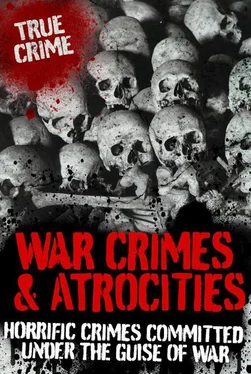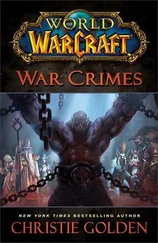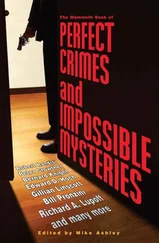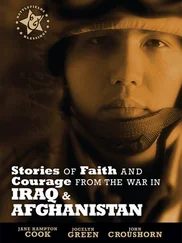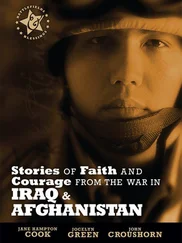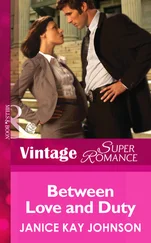In 1942, the Nazis decided to exterminate all Jews in Europe under the notorious ‘final solution’ program, and thus began the wholesale transportation of the ghetto inhabitants to concentration camps around Poland and elsewhere. The following year, the Jewish population staged a major revolt against this, known as the Warsaw Ghetto Uprising. However, after a brave attempt to hold off the Nazi war machine, the resistance fighters were crushed.
By the end of the war, the Jewish population of the Warsaw ghetto had been reduced from a total of about 450,000 to a mere 37,000. The herding of Polish Jews into the Warsaw Ghetto, and their miserable conditions of existence there before being sent to extermination camps across Europe, is one of the greatest war crimes of the twentieth century and remains a reminder of the terrible consequences of intolerance in our modern age.
BRICK WALLS AND BARBED WIRE
In 1939, Reinhard Heydrich, known as ‘the Butcher of Prague’, ordered the SS to begin the rounding up of Jews in Poland, commanding that Jewish people be confined to special areas in the towns and cities. These areas were to be patrolled by armed guards and cut off from the rest of the towns by brick walls and barbed wire. Prior to sending them to these newly created ghettoes, Jews had their property confiscated and in many cases were barred from employment.
The Nazis then began to deport Jews living in other parts of Europe, particularly Czechoslovakia and Austria, to the Polish ghettoes. By now, large ghettoes had been set up at Lodz and Warsaw. Herded into locked passenger trains without basic facilities, such as food and water, many Jews died on the journey to Poland. Once they got there, they realized that no proper accommodation had been made available to them, and many were forced to live in shelters on the street.
In the Warsaw Ghetto, the Nazis allowed a Jewish council, or Judenrat, to preside over the organization of the area. The Judenrat did their best to provide a police force in the ghetto to keep order, and it joined forces with youth movements to provide basic amenities for the refugees. They organized soup kitchens, feeding almost two-thirds of the ghetto population, and allocated housing: on average, families were forced to live in homes with seven people per room. The Judenrat also provided education for children and young people, sometimes in secret, and ran orphanages and hospital services. In addition, they established a lively cultural scene, with a ghetto newspaper printed in three languages, and a program of cultural events, using the talents of many Jewish artists who had been herded into the ghetto along with everyone else.
THE EXTERMINATION CAMPS
However, the Judenrat was also forced to negotiate with the Nazis, and it was involved in providing labour ‘battalions’ for the oppressors. And, despite their brave attempts to feed, clothe and house their people, conditions in the ghetto were so bad that between 1940 and 1942 around a 100,000 inhabitants died of disease and starvation. The situation then deteriorated further as SS chief Heydrich began to put his plans for genocide into action. At the Wannsee Conference on 20 January, the Nazis decided on the ‘Final Solution’: to exterminate all European Jews as quickly as possible by gassing them to death in extermination camps.
With horrifying speed and enthusiasm, the Nazis began to build new extermination camps that had the capacity to kill thousands in a day. These camps, which included Majdanek, Belzec, Treblinka and Sobibor, were intended to dispense with between 15,000 and 25,000 people per day. In a sickening display of obsequiousness, in January 1943, Gestapo leader Heinrich Himmler gave orders for the Warsaw ghetto to be ‘Jew free’ as a present to Hitler on his birthday at the end of April. Accordingly, over 300,000 Jews were deported from the ghetto to these new extermination camps, never to be seen again.
OPEN REVOLT
It was not long before the Jewish ghetto citizens realized what was going on and decided to stage a revolt. There was little hope of them winning the fight against Nazi military might, of course, but with the prospect of certain death at the extermination camps before them, there was no other alternative. Thus, the various resistance groups – including The Jewish Fighter Organization, the Jewish Military Union and the Polish Home Army – combined forces to make their stand against the Nazis.
The Waffen SS, the Nazi army, arrived in the Warsaw Ghetto on 19 April, 1943. As they entered, the Jews opened fire with machine guns, petrol bombs, grenades, rifles, and pistols. The heavily armed Nazi soldiers were caught off their guard, and took many casualties, so much so that they were forced to retreat. However, their leader, Jurgen Stroop, ordered all the buildings in the ghetto to be set on fire. As the inhabitants ran from the flames, they were captured and sent in large numbers to the Treblinka camp. Storm troopers then closed in on those hiding in the ruined houses, using poison gas to kill them. By the end of the fighting, only about 100 ghetto inhabitants were left: these people had managed to escape from the gas by going into underground sewers.
After the uprising, the Final Solution programme intensified as the Nazis tried to complete their programme of genocide before the end of the war. By 1944, a new threat had emerged: from the Soviet Red Army, who were now threatening to colonize Poland rather than hand it over to the government in exile once the Nazis had been defeated. As the Red Army advanced, members of the Polish resistance movements captured parts of Warsaw, but the Nazi military responded with a massive attack on the city, forcing the resistance fighters to take to the sewers once more. Heinrich Himmler gave orders that that all inhabitants of the city should be killed as an example to the rest of occupied Europe and accordingly, after heavy aerial bombing, thousands of ordinary citizens were taken out and shot by firing squads. By the time the Red Army arrived, 70 per cent of the city had been destroyed and hundreds of thousands of its citizens killed by the Germans, thus making it easy for the Soviets to take control.
AFTERMATH
In recent years, more information has come to light about the way of life in the Warsaw Ghetto during the nightmare years of World War II. Historian, politician, and social worker Emanuel Ringelblum, who lived in the Warsaw Ghetto during the war, organized a secret society there called Oyneg Shabbos, which translates from Yiddish as ‘Sabbath Pleasure’. This was a group of writers, scientists and others who made a collection of diaries, documents, posters, reports and descriptions of what was going on at the time, both in the ghetto and in the extermination camps at Treblinka and Chelmno. In 1943, just before the destruction of the ghetto, Ringelblum hid the archive in some milk cans and metal boxes. He and his family were then smuggled out of the ghetto and hidden by a Polish family in the city. However, the following year, he and his family were discovered and executed, along with the Polish family who had looked after them. After the war, parts of the archive was discovered in the ruins of the city. This contained newspapers, information regarding deportations and public notices from the Judenrat, as well as souvenirs of everyday life, such as concert invitations, chocolate wrappers and milk coupons, giving a fascinating picture of how people survived and pulled together in the darkest days of anti-Semitic persecution at the hands of the Nazis.
As the war drew to a close, it became clear that Poland’s ordeal was far from over. Stalin wanted to maintain Soviet control in Poland, but was opposed by Churchill and the British government, who insisted that Poland should be a free and sovereign state. As Churchill pointed out, Britain had entered the war over the issue of Poland’s sovereignty, when Hitler had invaded the country. However, Stalin would not compromise, although he did promise to hold elections there. Thus, having endured the regime of Nazi Germany, the Poles were now under the thumb of a new oppressor: the Soviet Communists.
Читать дальше
